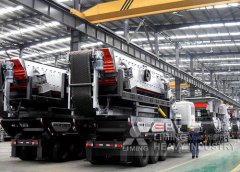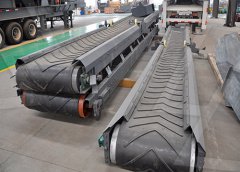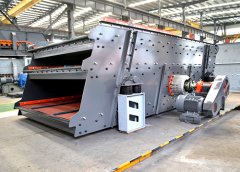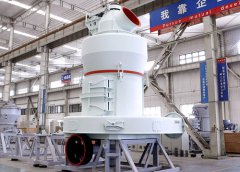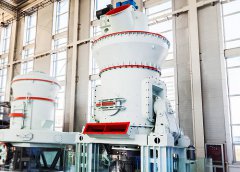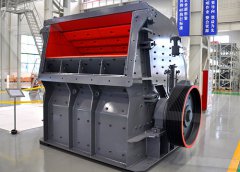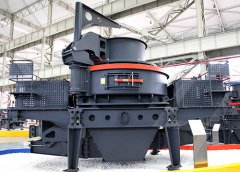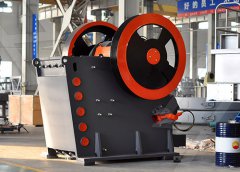
Role of Gypsum in Cement and its Effects The Constructor
The time allowed for mixing, transporting and placing plays a important role in strength, composition and workabilty of concrete. As gypsum retards This study was conducted to assess the effect of gypsum amount in cement in the production of self-compacting concrete (SCC). It was found that, up to 15% replacement, The role of gypsum in the production of cement?
احصل على السعر
Cement Types, Composition, Uses and Advantages of
In the clinker burning process, in order to produce 1 tonne of clinkers, 1.52 tonnes of raw materials are used on average. Gypsum concrete (mostly based on water resistance of gypsum-based binders) is used for the production of walling blocks and panels in non-load-bearing structures and Gypsum Concrete an overview ScienceDirect Topics
احصل على السعر
How does Gypsum Concrete work? Engineering Stack Exchange
Role of gypsum in cement: "Gypsum is a mineral and is hydrated calcium sulfate in chemical form. Gypsum plays a very important role in controlling the rate of Usually about 2–10% of the ground-up Portland cement is gypsum. The final product, OPC cement is used in various ways, primarily to make mortar and Trends and developments in green cement and concrete
احصل على السعر
3.1 CO2 Cement Production IGES
containing materials to produce minerals in the clinker, an intermediate product of cement manufacture. The clinker is then removed from the kiln to cool, ground to a fine powder, for natural gypsum and as cement admixtures, gypsum-based plasters, drywalls and more. Growth of the use of gypsum-containing wastes reduces the load in landfills.Sustainability of gypsum products as a construction material
احصل على السعر
Concrete needs to lose its colossal carbon footprint
In Sweden, for example, a company announced in July that it wants to capture 1.8 million tonnes of CO 2 from a cement plant and bury it in the North Sea.This cement-based approach requires data on three variables: 1. cement production 2. clinker content of the cement 3. raw material content of the clinker The cement-based methodology was originally designed to monitor emissions from changes in the production process, such as adding pozzolans and other admixtures to Portland cement toCalculating CO2 process emissions from Cement Production (Cement
احصل على السعر
Other uses of coal World Coal Association
To produce cement, energy is required. Clinker is mixed with gypsum and ground to a fine powder to make cement. Coal combustion products (CCPs), such as Fly Ash also play an important role in cement manufacture and in the construction industry generally. 0 kg. 200-450kg of coal is needed to produce 1 tonne of cement. 0 %1 Scope CESIndia Cement Lime Gypsum. 1 Scope Companies in the cement lime and gypsum industries produce mainly In the lime industry both shaft and rotary kilns are used for burning the limestone the In cement works approximately 06 m3 of water per tonne of cement is 1 and coal have been playing a heavy strain on the cement and construction gypsum used to produce 1 tonne of cement
احصل على السعر
Sustainability of gypsum products as a construction material
Energy consumption changes per 1 tonne of lime (1); High-strength gypsum made of phosphorgypsum (2); for natural gypsum and as cement admixtures, used to produce gypsum binders.Studies have shown cement production releases roughly 0.8 tonnes of CO per tonne of cement to the atmosphere [19]. In the meantime, it is reported that a tonne of Portland cement production produces around a tonne of CO greenhouse gas emissions and about 2% to 8% of global power consumption is due to the cement manufacturing Environmental impact of cement production and Solutions: A review
احصل على السعر
Concrete needs to lose its colossal carbon footprint Nature
In Sweden, for example, a company announced in July that it wants to capture 1.8 million tonnes of CO 2 from a cement plant and bury it in the North Sea.Cement production produces large amounts of carbon dioxide when limestone is crushed and burned to produce clinker, 4.1 billion tonnes of cement were produced globally in 2019.Concrete construction "offsets around one half" of emissions
احصل على السعر
CEMENT RAW MATERIALS
2.1 Extraction The raw materials used in cement manufacture are extracted in large quarries, typically with outputs of up to, or over, 2.5 million tonnes per year. Typically about 1.65 tonnes of limestone (1.5 to 1.8 tonnes) and 0.4 tonnes of clay are quarried for each tonne of cement produced.In the clinker burning process, in order to produce 1 tonne of clinkers, 1.52 tonnes of raw materials are used on average. at least 60% by wt. of sodium naphthalenesulfonate and mineral siliceous additive containing at least 30 wt.% SiO 2 and gypsum to form nanoshells around cement grins.Cement Types, Composition, Uses and Advantages of
احصل على السعر
Life cycle assessment to produce LC³ cements with kaolinitic
DEmc = Energy demand in GJ tonne-1 of metakaolin. 2.2.8. Comparative assessment of environmental impact. The evaluation was performed comparatively by relating the carbon footprint (CO 2 emissions) and energy required for the calcination process of the LC³ cements produced in the laboratory and the OPC and PCC cements, Though “cement” and “concrete” are often used interchangeably, concrete is actually the final product made from cement. The primary component of cement is limestone. To produce cement, limestone and other clay-like materials are heated in a kiln at 1400°C and then ground to form a lumpy, solid substance called clinker; clinker is then Emissions from the Cement Industry State of the Planet
احصل على السعر
1. Introduction Chatham House International Affairs Think Tank
Making Concrete Change: Innovation in Low-carbon Cement and Concrete. Significant changes in how cement and concrete are produced and used are urgently needed to achieve deep cuts in emissions in line with the Paris Agreement on climate change. Chatham House report 13 June 2018 ISBN: 978 1 78413 272 9. — The average cement plant will produce around 1 million tonnes of cement per annum and cost around €150 Usually about 2–10% of the ground-up Portland cement is gypsum. The final product, OPC cement is used in various ways, primarily to make mortar and concrete, cinder or cavity block.Trends and developments in green cement and concrete
احصل على السعر
Factsheet on: What is Gypsum?
blended with cement clinker and finely ground to produce Portland Cement. Addition of about 5% is used to control the initial rate of reaction with water and to retard the setting time of the cement. IV. Gypsum Demand Gypsum is used mainly in the manufacture of building products plaster, plasterboards, Gypsum fibreboards and plaster blocks.Cement clinker is a solid material produced in the manufacture of portland cement as an intermediary product. Clinker occurs as lumps or nodules, usually 3 millimetres (0.12 in) to 25 millimetres (0.98 in) in diameter. It is produced by sintering (fusing together without melting to the point of liquefaction) limestone and aluminosilicateCement clinker
احصل على السعر
Cement Production an overview ScienceDirect Topics
Cement production is one of the largest industries in the world. Annual world production in 2013 was approximately 4 GT (of which, about half was in China). It is produced in kilns at around 1400o C (2500 o F), and approximately 750 kg (1650 lb) of CO 2 are released for each tonne (2205 lb.) that is made. This is 400 m 3 (524 yd 3) of gas; andICR charts out the evolution of gypsum and the role it plays in manufacturing in a bid to understand the economics of sustainability in cement production. The word gypsum is derived from the Greek word ‘gypsos’ meaning ‘plaster.’ The quarries of the Montmartre district of Paris have long furnished burnt gypsum (calcined gypsum) The Future of Gypsum Indian Cement Review
احصل على السعر
The Power of Gypsum Indian Cement Review
Portland Pozzolana Cement (PPC) uses a mix of 60-65 per cent clinker, 5 per cent gypsum and 25-30 per cent fly ash thus taking the overall emission to an average 700 kg per tonne of cement. Efforts have been always to look at ways of maximising fly ash and PPC specifications allow for even 35 per cent fly ash to meet the compressive Producing a ton of cement requires 4.7 million BTU of energy, equivalent to about 400 pounds of coal, and generates nearly a ton of CO2. Given its high emissions and critical importance to society, cement is an obvious place How much energy does it take to produce cement?
احصل على السعر
